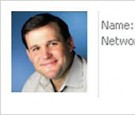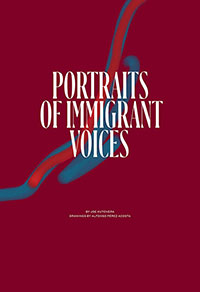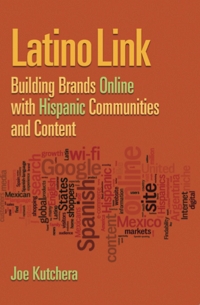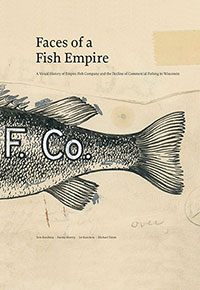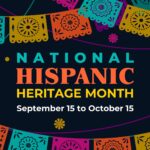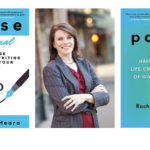This article originally appeared on MediaPost and is a preview of Latino Link: Building brands online with Hispanic communities and content from Paramount Books.
When Facebook’s director of sales in Europe, the Middle East and Asia, Blake Chandlee, presented at IAB Spain’s conference last month, he said in order to generate new demand for products, marketers need to move up the consumer funnel. “The power of the social graph is changing the discovery process,” he said. “The network of real connections through which people communicate and share information is the most influential way to reach someone.” More specifically, marketers can tap into these networks by utilizing a variety of targeting methods with information from Facebook users’ profiles like age, gender, interests and marital status. He shared a few more insights gained from sitting atop the EMEA social hub with me after the talk.
You mentioned in your presentation that your banner ad sales agreement with Microsoft would end in December 2009 because it wasn’t working. Why didn’t it work and what advertising programs are working?
The agreement with Microsoft to sell IAB standard banners will end on December 31 outside of the U.S. market, which represents 14 markets. The agreement is ending not because the partnership wasn’t working. We have an excellent relationship with Microsoft and this will continue as they are both an investor and a partner of ours in search, but because we found that traditional banner formats were not as effective on Facebook as the formats we have developed.
On Facebook there are two types of ad formats that serve very different needs.
1. On our home page we have developed the engagement ad format that allows brands to take advantage of the actions and behaviors taking place between people every day on Facebook, including making comments, taking polls, becoming fans of pages, watching videos and joining events. By enabling brands to integrate into these via an ad unit served to relevant audiences based on a brand’s objectives, and then allowing those branded actions to then be organically distributed via the social graph, we are integrating brands into the daily lives of users in a very natural way versus the old broadcast model. This promotes discovery and engagement of brands within Facebook in a very powerful, predictable and scalable way.
2. Our second ad product focuses on the performance advertisers. We have built a highly efficient and scalable ad platform that allows advertisers to target users on all pages outside of the home page with a simple image and text ad referred to as an ASU (ad space unit). These ads are targeted via a range of criteria including age, gender, location [and] keyword interests and are served within an online auction model allowing agencies and clients to optimize based on roi. By serving hundreds of billions of ad impressions a month, we are now seeing advertisers around the world generating campaigns that, in cases, drive more efficiency and volume than paid search.
Are your ad sales products sold in the same way across the world or do you customize products for each market? Do consumers typically respond the same way globally?
We are a technology company that views the world on a global basis, and builds platforms to reflect this but provides tools to consumers, developers and advertisers to localize based on their needs and expectations. In the case of advertising this would be geographically based. From this perspective, our ad products are similar globally and provide tremendous efficiency for global advertisers. We do, however, understand there are considerable differences locally and therefore are establishing local sales organizations to reflect these differences. Depending on where you are in the world, our teams will educate agencies and advertisers as to the value of Facebook as part of a communications strategy, in a way that is consistent with that country’s stage of development. That said, brands have a universal objective of establishing closer connections with users to build awareness, consideration, favorability and loyalty. These are areas that we are seeing tremendous success with leading brands in most markets.
You mentioned that Zara, Real Madrid, Rafael Nadal and the Prado Museum all have Facebook pages. How do Spanish brands, people or organizations like these grow their fan base in-country and across the world?
In many cases today, brands, celebrities, politicians, television shows, local restaurants and businesses will most likely build a page on Facebook where they establish a community. The advantage is that activity that takes place here has organic and viral attributes that allow brands to expand their presence through friends and families of their fans. By having the ability to publish into the newsfeeds of their fans, and delivering a message or content that is compelling enough for their fans to share, the brands can become part of the social fabric of people’s lives. This requires a commitment from brands to have an ongoing relationship and dialogue with users, to be authentic, to bring value to users consistent with their expectations, and to listen as much as publish. Brands such as Starbucks, Adidas, Nike, Ben & Jerry’s, AXE and others benefit from building robust, active and thriving communities. To scale these communities, brands or organizations will often choose to run paid marketing campaigns to relevant users on Facebook, typically through our engagement ad platform. Our local teams will help brands understand the targeting capabilities that best meet their objectives.
You mentioned that Facebook has 30 million Spanish-language users, or 10 percent of its entire user base. How does the growth of the Spanish-language market compare to other languages?
We do not typically publish language-based numbers, but Spanish is one of the world’s most common languages. Today Facebook is available in over 65 languages, whereas 18 months ago we were only available in English. We accomplished this enormous shift via crowd-sourcing of translation services, allowing our users to translate for us in a very predictive and scalable way. Spanish was our first translation and therefore very meaningful to us as a company.
Spain has 7 million Facebook users. How does Spain compare to your other Spanish-language markets in terms of total users, growth rates and usage patterns?
We are seeing tremendous growth all over the world in many different languages, Spanish being one of them, of course. We are very proud of our 7 million active users in Spain, and what is often overlooked is that 50 percent of our users come back daily, which is an unprecedented number. Southern Europe in general has been a very strong region due to the very social nature of the cultures, and Spain is no exception. We are very pleased with the growth, and excited that there continues to be upside and growth in the country.
Facebook’s international traffic grew from 7 percent to 70 percent over the past two years. This shows the power of a great idea combined with a well-designed, useful site can spread quickly. Can you confirm that statistic and are your ad sales growing in conjunction with the international growth rate?
That is correct and actually the time line was only 18 months! Due to the translation-services exercise we began last summer, our user growth has become increasingly international, although our core English-speaking markets, including the United States, are still seeing strong growth as well. Given we just opened our international sales efforts in the beginning of 2008, we are still building the infrastructure and organization required to accelerate these, but we are well on our way, having opened our international headquarters in Dublin, and established local sales offices in London, Paris, Sydney, Madrid, Milan, Stockholm and Toronto. These efforts and expansion will continue into 2010. We have been very pleased with the high level of interest and subsequent investment we are seeing as we enter new markets. Obviously we are delivering value and will continue to do so. International revenue growth is an important priority for the organization and we are pleased with the results to date.
Is social media moving us toward to a world organized more by language than by country?
We believe that the world is increasingly becoming globalized, and I am as likely to be friends with someone in Germany as I am with someone in France, England or the United States. Given [that] the fundamental value of social media is interaction with friends and family, often this is dictated more by culture and language than by borders – at least in our world this is true. That said, there are specific rules and regulations imposed at a country level that require us to operate locally at times which is important for us to recognize, and we use technology to scale this around the world.

